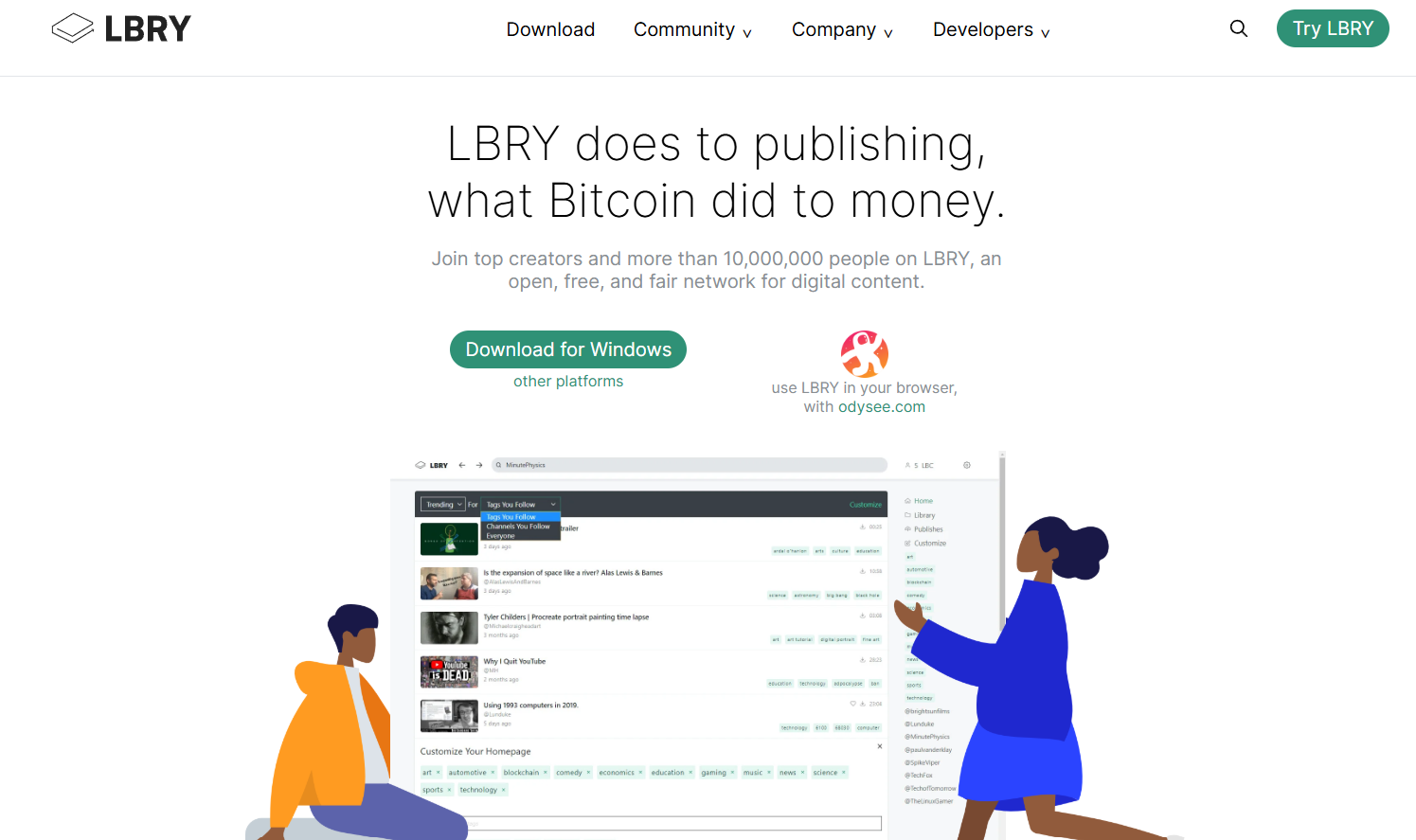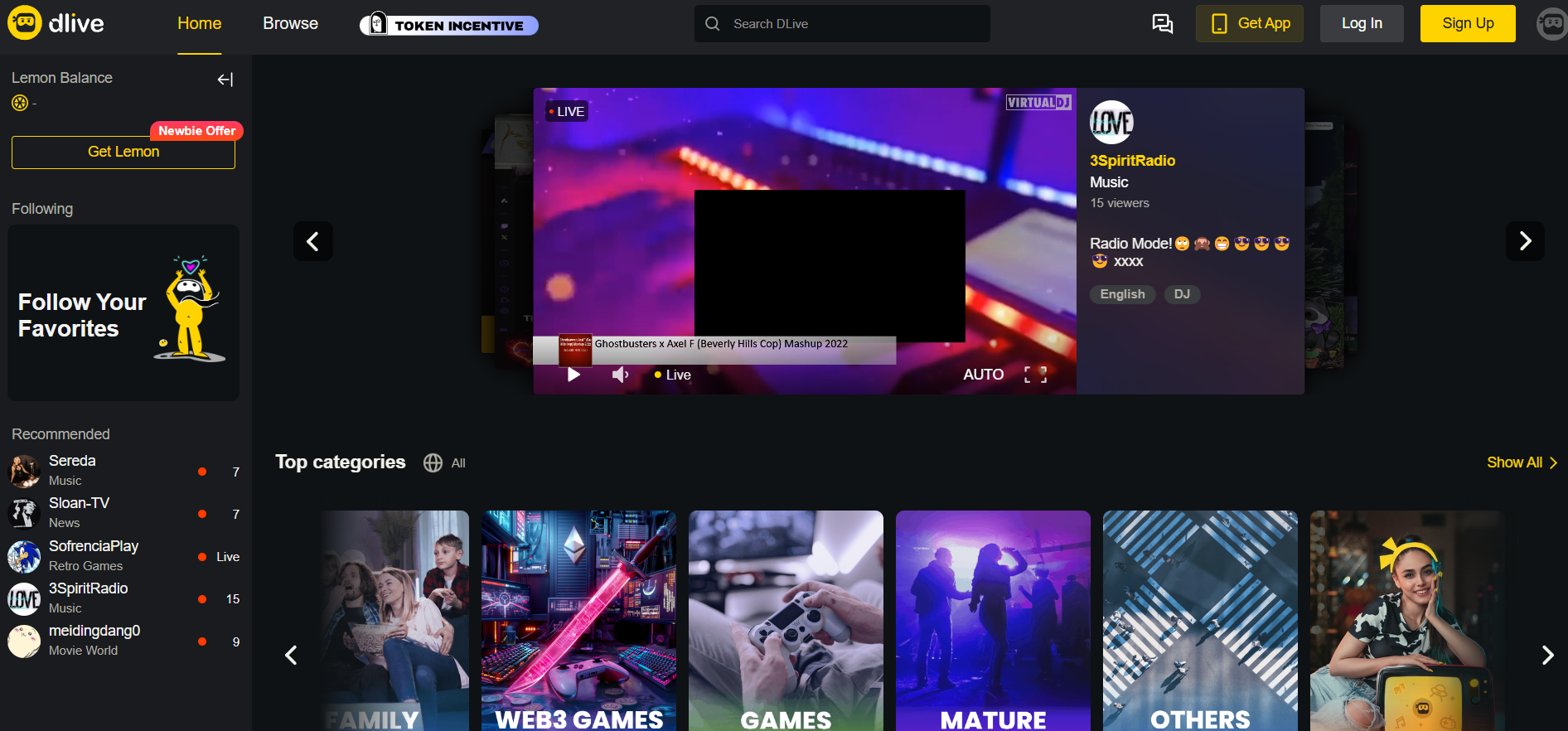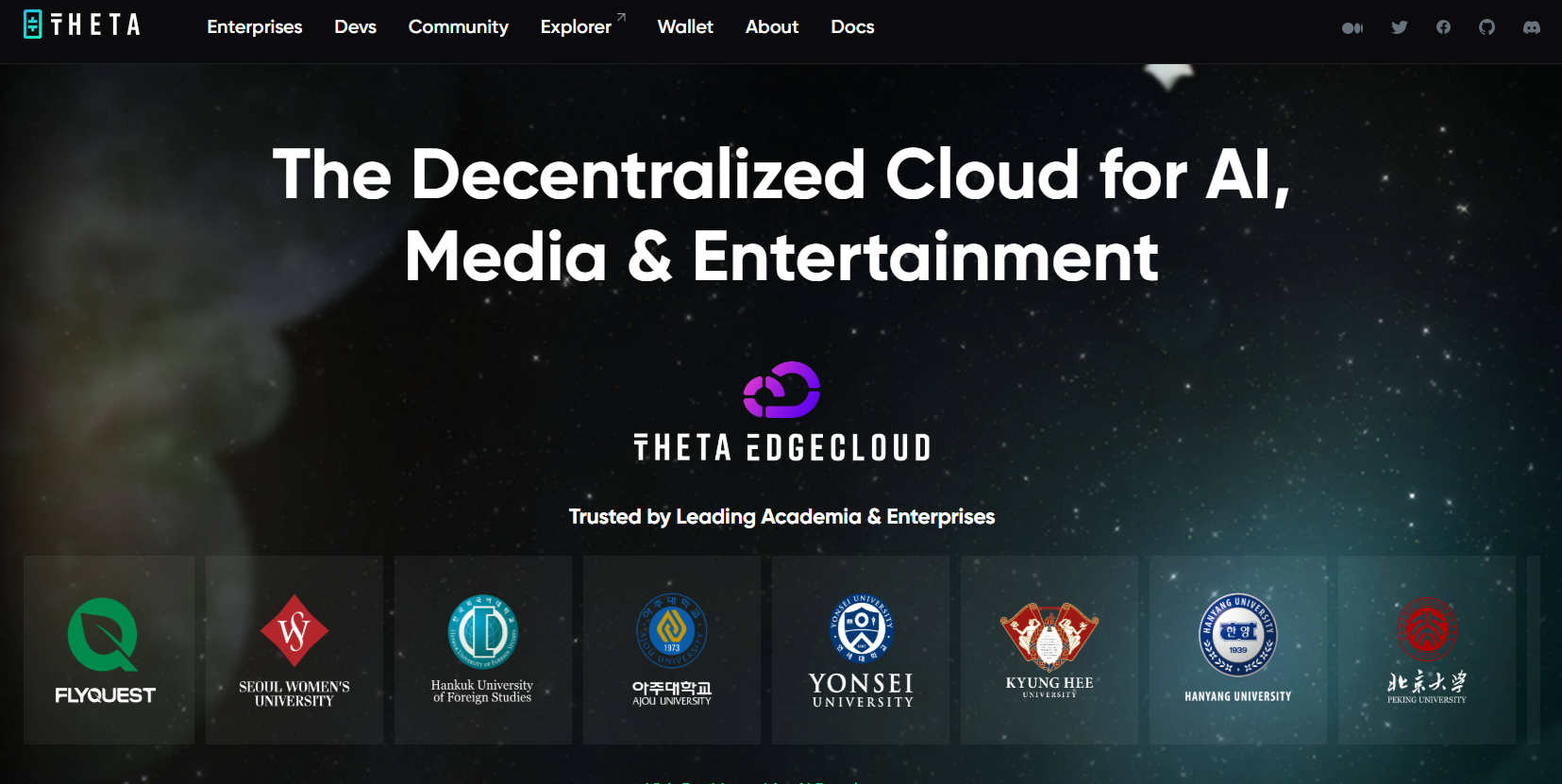Get insights.
Unlock value.
- 14-day free trial
- Set up in minutes
- No credit card required
7 Web3 YouTube Alternatives That Are Changing The Game
Are you a YouTube content creator? Is your video content getting banned or removed from YouTube? Do you think YouTube has a high monetization bar? Do you think YouTube is not privacy-focused? Do you think YouTube is not censorship-resistant? Do you want a better YouTube alternative? Then, you have come to the right place.
So, what’s the solution here?
A privacy-focused, censorship-resistant video streaming platform is possible with BlockChain. With BlockChain, your data is no longer stored centrally in the cloud. Instead, the data is distributed across many nodes on the Internet. Such applications are called Web3 applications or Decentralized applications.
I have chosen 7 such Web3 YouTube alternatives that are changing the game.
- LBRY / Odysee
- DTube
- Dlive
- BitChute
- Theta / ThetaTV
- LivePeer / Tape
- 3Speak
Let’s look into each in detail.
Tool | Notable Features | Best For | Cons |
LBRY / Odysee | Blockchain-based file sharing; censorship-resistant; crypto monetization via LBRY token | Privacy-focused video creators seeking democratic governance | Small user base; Monetization can be complex to understand |
DTube | Decentralized on Avalon blockchain + IPFS; ad-free; no hidden algorithms | Users wanting YouTube-like UI with crypto earnings | Limited content variety; Steeper learning curve for new users |
DLive | TRON blockchain; fair content promotion; dark-themed modern UI | Livestreamers and creators banned from YouTube | Criticized for moderation policies; User base growth challenges |
BitChute | Peer-to-peer video sharing; direct creator payments | Users seeking uncensored content and free speech | Some content quality concerns; Accusations of poor moderation |
Theta / ThetaTV | Decentralized video delivery network; earns TFUEL tokens; peer-to-peer video streaming | Gamers and streamers interested in earning crypto while streaming | UI could be better; Non-tech-savvy users may struggle |
LivePeer / Tape | Platform for building decentralized video apps; scalable and low-cost | Developers integrating video streaming into Web3 apps | Requires technical setup; Audience is project-specific |
3Speak | Hive blockchain integration; creator asset ownership; censorship-resistant | Free speech advocates and small content creators | Growing user base slowly; Maintaining high content quality is a challenge |
LBRY / Odysee
LBRY is a BlockChain-based file-sharing and payment network platform mostly used by video platforms. Odysee is a decentralized video streaming app built on the Web 3.0 LBRY network.
LBRY contains various types of digital content with a focus on video content. LBRY also provides the technical infrastructure to run decentralized applications.
Besides other clients, Odysee is the most popular LBRY application, offering free and paid plans.
This platform is for freedom lovers and people who long for a democratic governance model in a video-streaming application.
In Odysee, crypto Monetization is made possible with the LBRY token.
Jeremy Kauffman is an American Entrepreneur and political activist who created LBRY and Odysee.
Any video uploaded to Odysee is recorded in a public ledger. The video is available for all clients built on the LBRY network. This practice also avoids copyright issues.

Pros
- Provides security permanence that is not available in centralized systems.
- Odysee is built for privacy-conscious users.
Cons
- The user base is still small compared to a behemoth like YouTube.
- You may face difficulty in understanding the workings behind monetization.
DTube
DTube claims to be the world’s first decentralized video-sharing platform.
DTube was initially launched on the STEEM BlockChain alongside the IPFS peer-to-peer network. It was later launched on its own lower-layer Avalon BlockChain.
The removal and hiding of videos are in the hands of users. It happens through upvotes and downvotes.
You will be reminiscent of the YouTube User Interface when you see the DTube user interface,
How often have you seen YouTube give you video recommendations based on watch history? This is no longer the case with DTube. DTube does not use hidden algorithms to decide which videos make it to the front page.
How often have you seen yourself waiting for 15-20 seconds before skipping an ad to watch a video? This is also no longer the case with DTube because DTube is ad-free. Ads are only possible when content creators interlace their videos with Ads during edits.
The views count is not displayed on DTube like on YouTube. Instead, you can see the amount generated by each video.
DTube's revenue is 90% shared with the content creator community, while only 10% is used to run the BlockChain and further develop it.
DTube was launched in 2017 by Adrian Marie, a full-stack developer who attended Blaise Pascal University.

Pros
- It does not ban or remove any videos like YouTube. It is censorship-resistant.
- Watching, sharing, & commenting on videos helps users earn crypto tokens.
Cons
- Deter new users from becoming easily accustomed to the user interface.
- It may not offer the same content variety as YouTube.
Dlive
Many challenges were put forth by the video streaming industry. A few are listed below.
- Unfair content promotion
- Rising platform fees
- Censorship
- High monetization bars
People banned from YouTube saw DLive as a reliable alternative.
Charles Wayn and Cole Chen were resolved to thwart these challenges. This led to the founding of Dlive. Both Charles & Cole did their education at the University of California, Berkley, and founded Dlive in 2017.
Dlive was originally operated on STEEMIT Blockchain. It was relaunched on the LINO network in 2019. Finally, it was operated on the TRON network during the purchase by Justin Son, the founder of the TRON network.
The platform engages crypto tokens for donating and subscribing to content creators. Dlive is known to employ algorithms that fairly promote all streamers equally.
The user interface has a cool dark theme with an awesome user experience. It provides all the features most players in the video streaming industry offer.

Pros
- Provides knowledge pages & customer support to address all queries of the users.
- A very supportive community that encourages interaction & engagement.
Cons
- Stiff competition from established giants and difficulty increasing its user base.
- Faced criticism about its moderation policies, accusing it of unfair content promotion.
BitChute
BitChute is a portmanteau of the words Bit and Parachute.
BitChute’s important vision is to resist internet censorship.
There is no algorithm tweaking to hide certain content.
Ray Vahey, the founder of BitChute, registered the company in Newbury, England.
BitChute not only relies on advertising. Instead, users can send payments to content creators directly.
In October 2022, according to a study by the Pew Research Center, 7% of US adults were aware of BitChute.

Pros
- There are interesting video uploads in BitChute that are unavailable elsewhere.
- BitChute is known for its simple user interface.
Cons
- There are a few concerns that BitChute is becoming a hotbed of Vitriolic content.
- There is also an accusation that moderation is being done in BitChute.
Theta / ThetaTV
Theta aims to provide a next-generation decentralized video delivery service to revolutionize video streaming.
Theta enables media companies to drive incremental revenues using the Web3 business model.
ThetaTV is a leading application on the Theta Network.
Mitch Liu founded Theta in 2017. His affinity for the gaming industry led him to develop ThetaTV.
It completely utilizes a decentralized network of nodes for efficient video delivery.
Theta was founded with an ICO that raised $ 20 million.
It employs 2 tokens, THETA and TFUEL. Native THETA is a governance token that runs on the Theta Network. TFUEL token is issued to users who watch video streams on the network.

Pros
- Peer-to-peer networks reduce the need for expensive CDN.
- Offers a way for viewers and creators to earn cryptocurrency.
Cons
- The User Interface is not so great. However, it is not an indicator it will be bad forever.
- Non-tech-savvy individuals might be deterred from fully embracing the network.
LivePeer / Tape
Just like LBRY, LivePeer is also a platform to create decentralized video streaming applications. This is not a video streaming service but a platform to create a video streaming service. They help all BlockChain projects hoping to integrate video into their applications.
LivePeer is an open-source, decentralized video streaming service built on the Ethereum BlockChain.
TapeXYZ is a video streaming platform that is built on LivePeer.
LivePeer is less like Netflix and more like AWS, a company that manages all the database storage and video transcoding.
LivePeer is a highly scalable video streaming business model at a low cost.
This is more like a ‘platform as a service’ for developers looking for live video capabilities. Viewers can stream videos using applications built on the LivePeer platform.
LivePeer supports LPT token payment methods.
LivePeer was co-founded by Doug Petkanics, Eric Dang & Yondon Fu.
They are essentially becoming AWS of Web3.0
Pros
- By utilizing a decentralized network of nodes, they are reducing the cost.
- Allows Token Holders to earn rewards for their contributions.
Cons
- Setting up and managing a node might require technical adeptness.
- Being relatively new, it faces challenges in attracting wide audiences.
3Speak
Just like other decentralized applications, 3Speak content creators own their assets. 3Speak cannot take your assets away.
3Speak cannot delete your communities.
While using BlockChain technology, the ownership of the asset is with the creator and user, not with 3Speak.
This is a censorship-resistant platform.
3Speak is integrated with HIVE BlockChain so that users get rewarded with HIVE tokens.
Donations to the platform can be made using the proprietary SPEAK Token.
With 3Speak, even small creators can receive great rewards, unlike YouTube, where only prominent creators are rewarded.
It contains all the features of competing platforms.
Dan Hensley is a prominent co-founder of 3Speak.
Pros
- A platform that is committed to free speech.
- The direct monetization model is more lucrative.
Cons
- There are challenges in ensuring content quality.
- It faces little difficulties in growing its user base.
Final Word
Thanks to the dawn of Web 3.0, we no longer need to tolerate privacy, censorship, and ownership issues.
Decentralized applications are up-and-coming in achieving a democratic governance model.
The Web3 YouTube alternatives discussed here are slowly receiving acceptance. Their user base is growing daily.
If you have used any of the discussed decentralized alternatives, share your feedback with us.
Let me know if you need to add any Web3 alternatives to this list. I can consider adding your suggestion. You can reach us at [email protected]
If you're looking for a secure and private way to create surveys, polls, or forms, give BlockSurvey a try - a fully decentralized and privacy-focused platform.
7 Web3 YouTube Alternatives That Are Changing The Game FAQ
How are these Web3 YouTube alternatives different from YouTube?
These alternatives offer decentralized platforms, blockchain technology, censorship resistance, fair monetization, and user control over content.
Are these alternatives reliable and trustworthy?
Yes, these platforms prioritize user privacy, content ownership, and community governance, ensuring trustworthiness and transparency.
Can I earn money on these Web3 YouTube alternatives?
Absolutely! These platforms offer various monetization options, including ad revenue sharing, tipping, and direct fan support.
Are these alternatives safe from censorship?
Yes, due to their decentralized nature, these platforms provide resistance against censorship, ensuring freedom of speech and expression.
Are these Web3 YouTube alternatives user-friendly?
Yes, most of these platforms aim to provide a seamless user experience with intuitive interfaces and familiar features for easy navigation and content consumption.
Get insights.
Unlock value.
- 14-day free trial
- Set up in minutes
- No credit card required
